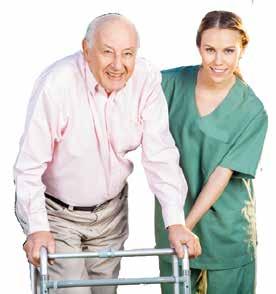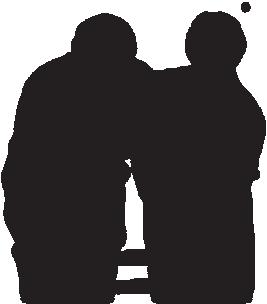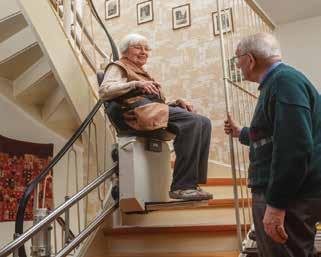
2 minute read
Healthy Geezer: What is involved with heart-valve surgery?
First, let’s review how the heart works.
There are four chambers in the heart—two atria on top and two ventricles below. There are four valves that open and shut with every heartbeat to control the circulation of the blood.
Advertisement
Blood flows in one direction through the heart to get a new supply of oxygen from the lungs. Used blood comes back to the heart from the body and goes into the right atrium. The right atrium pumps the blood downward into the right ventricle. The right ventricle pumps the blood to the lungs. The oxygenated blood then returns from the lungs to the left atrium, which then moves the blood down into the left ventricle. The left ventricle pumps the blood out into the body.
Valves can malfunction and strain the heart. If a valve doesn’t close properly, blood will flow backward, causing “regurgitation.” If valve flaps don’t open correctly, they prevent blood from flowing through them. This is called “stenosis.”
Advanced valve disease can cause blood clots, stroke or sudden death from cardiac arrest. For seniors, the flaps of the aortic and mitral valves thicken and harden with age, making blood flow more difficult. These changes may lead to complications in people with heart disease.
Valve diseases can also be caused by birth defects, infective endocarditis—a bacterial infection of the lining of the heart’s walls and valves—coronary artery disease, and heart attack.
People with malfunctioning valves who don’t have serious symptoms may not need treatment. Medicines can help with symptoms, but surgery is often needed to correct valve disease.
There is also a percutaneous (through the skin) procedure that may be used to open narrowed valves, where a balloon-tipped catheter is inserted into the narrowed valve and inflated. The balloon makes the central area of the valve larger, before it’s deflated and removed.
Valve surgery is an open-heart operation that requires the heart to stop beating. A heart-lung bypass machine keeps the blood circulating in the patient’s body.
During surgery, valves may either be repaired or replaced. Repair may involve opening a narrowed valve or reinforcing a valve that doesn’t close properly. Surgeons replace irreparable valves with prosthetic valves.
Prosthetic replacement valves can be mechanical—plastic, carbon or metal—or can be composed of human or animal tissue. There’s an increased risk of blood clots forming with a mechanical valve, so patients who get them have to take blood-thinning medicines as long as they have these kinds of valves. ■
HEALTHY GEEZER BY FRED CICETTI Send your general health questions to the Healthy Geezer in care of Life After 50, or email him directly at fred@healthygeezer.com
Tired of CPAP?





Sleep peacefully and safely with our oral appliance treatment. • Treat your sleep apnea • Stop the snoring • Get the restful sleep you and your partner have always dreamed of • Covered by most medical insurances
Dr. Jared Waite, DDS, Diplomate ABDSM, ABCDSM, ASBA
Call now for a FREE CONSULTATION
719-323-6741 www.SleepSprings.com










